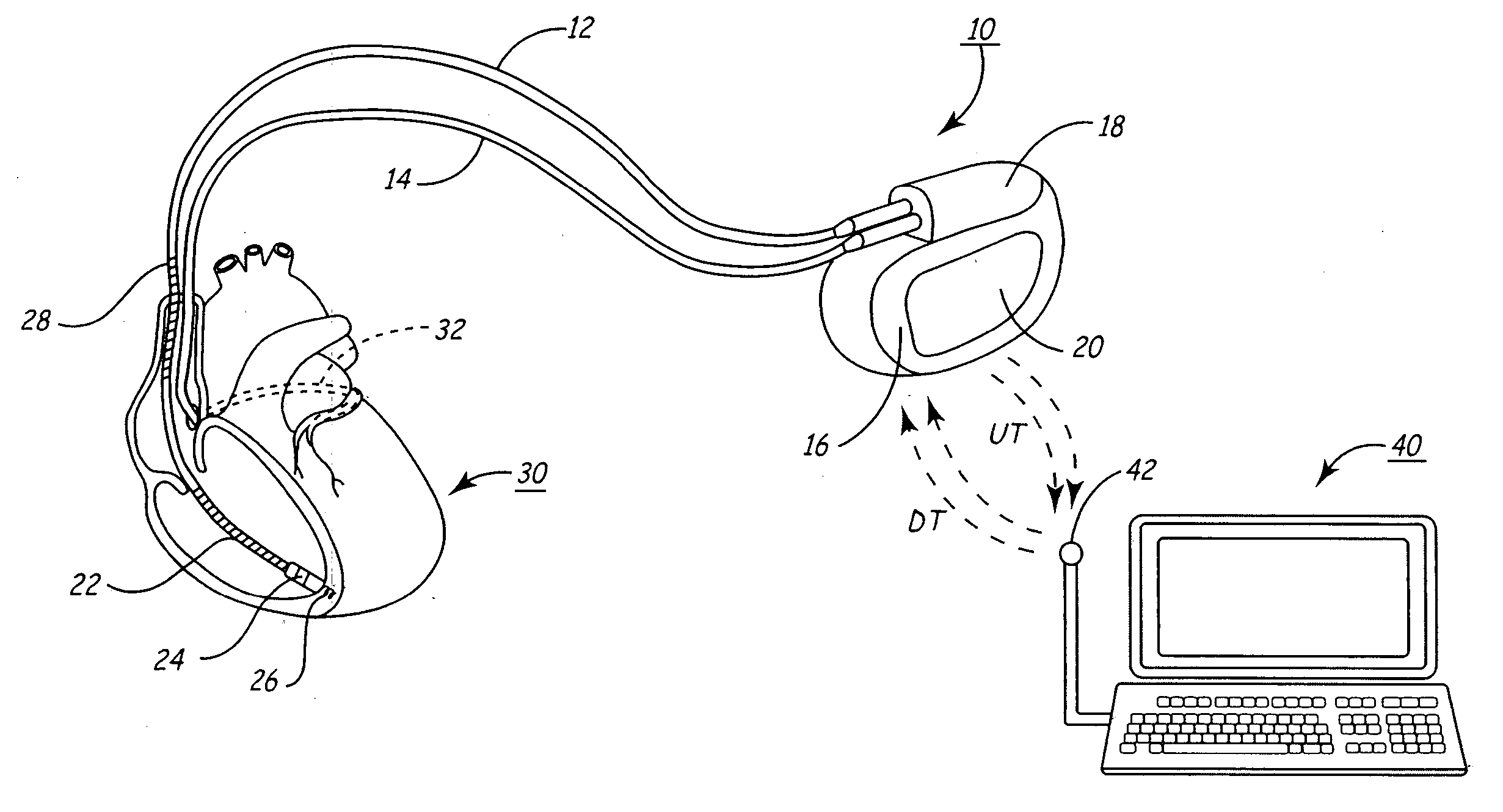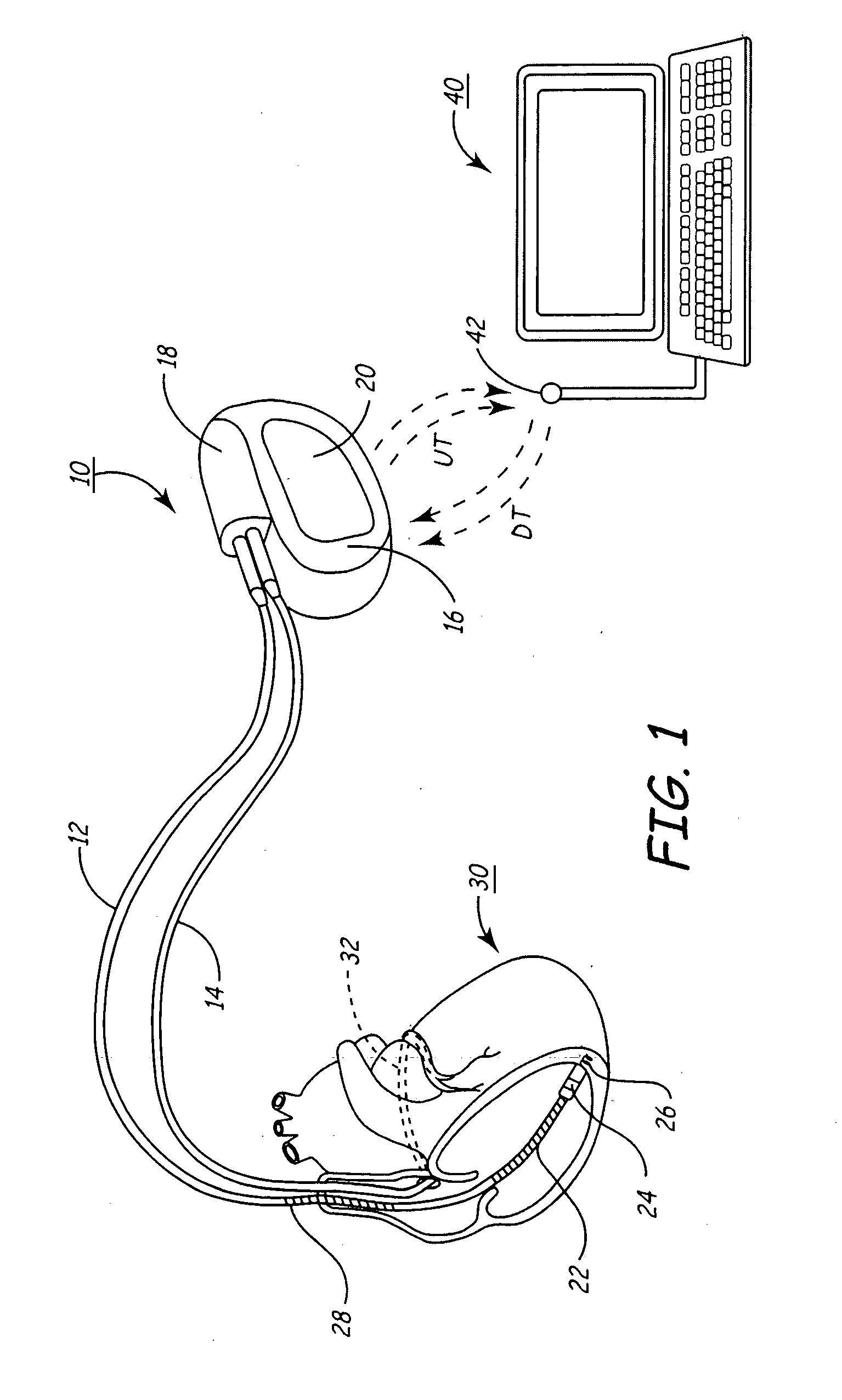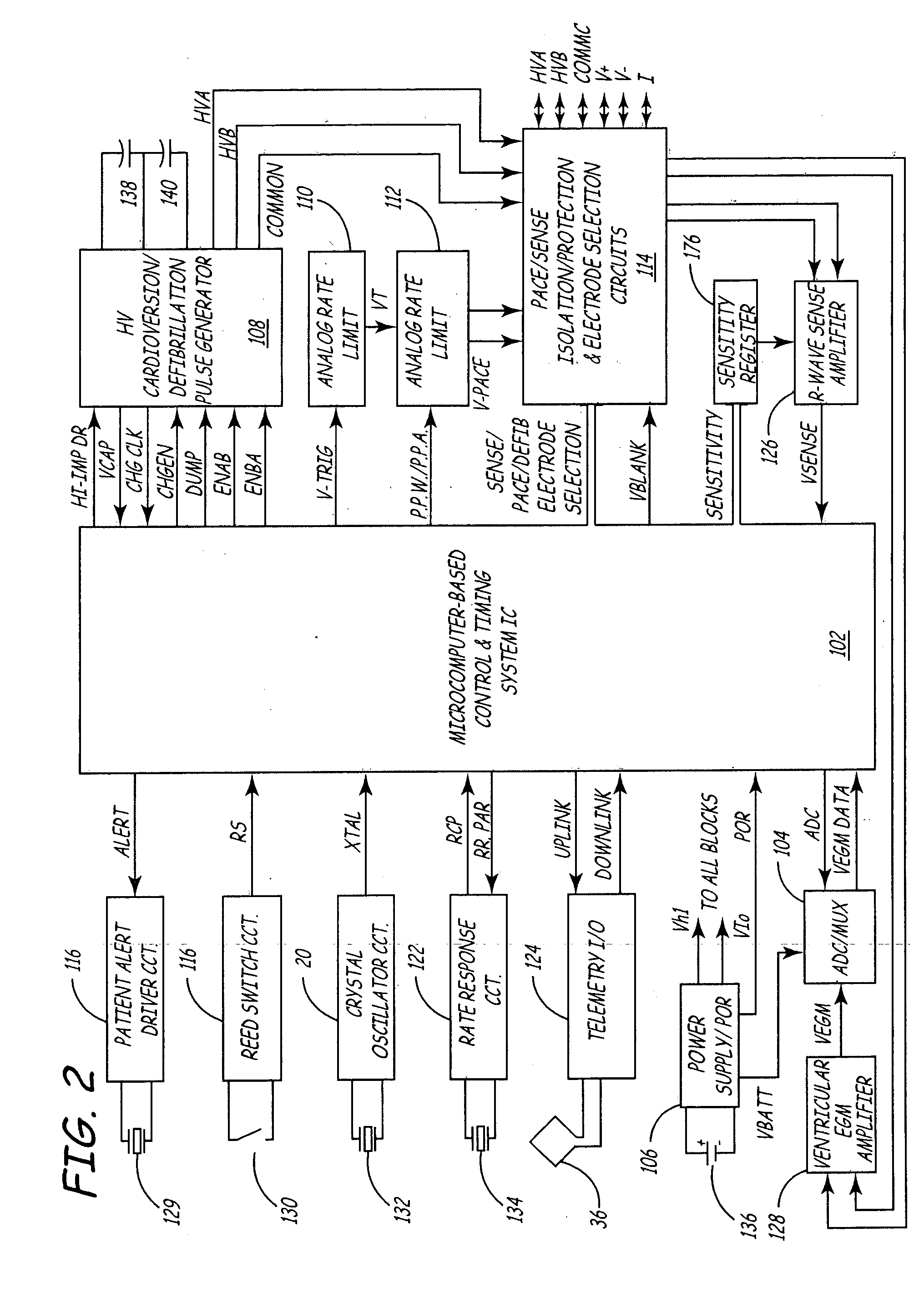Inter-episode implementation of closed loop ATP
a closed-loop, inter-episode technology, applied in the direction of therapy, heart stimulators, heart defibrillators, etc., can solve the problems of insufficient interaction, ineffective atp regimen, and insufficient effectiveness of atp regimen, so as to reduce the pain and energy-consuming cardioversion/c/d, the effect of reducing battery depletion
- Summary
- Abstract
- Description
- Claims
- Application Information
AI Technical Summary
Benefits of technology
Problems solved by technology
Method used
Image
Examples
Embodiment Construction
[0025] In the following detailed description, references are made to illustrative embodiments of methods and apparatus for carrying out the invention. It is understood that other embodiments can be utilized without departing from the scope of the invention. In particular, the present invention is described in the context of a single chamber, ventricular ICD for providing the functions of monitoring the ventricular EGM, detecting VF, SVT, and VF, discriminating VF from VT and SVT, and providing ventricular ATP regimens in response to a detected VT episode, storing data related to detected VF, VT and SVT episodes for uplink telemetry transmission to external medical devices, and optionally providing VVI pacing for bradycardia.
[0026]FIG. 1 illustrates one embodiment of an ICD of the type disclosed in commonly assigned U.S. Pat. No. 6,393,316, comprising an ICD implantable pulse generator (IPG) 10 in which the ATP delivery algorithms of the present invention can be advantageously incor...
PUM
 Login to View More
Login to View More Abstract
Description
Claims
Application Information
 Login to View More
Login to View More - R&D
- Intellectual Property
- Life Sciences
- Materials
- Tech Scout
- Unparalleled Data Quality
- Higher Quality Content
- 60% Fewer Hallucinations
Browse by: Latest US Patents, China's latest patents, Technical Efficacy Thesaurus, Application Domain, Technology Topic, Popular Technical Reports.
© 2025 PatSnap. All rights reserved.Legal|Privacy policy|Modern Slavery Act Transparency Statement|Sitemap|About US| Contact US: help@patsnap.com



